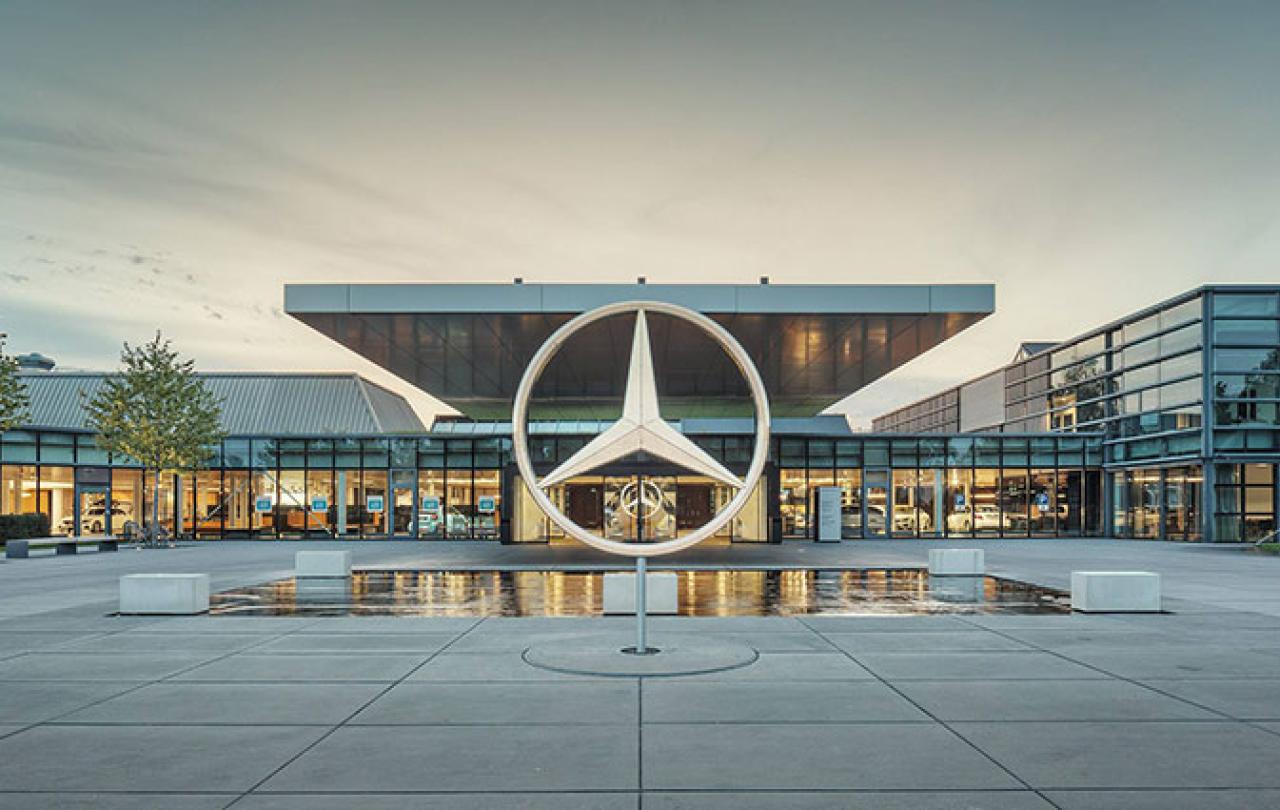
I visited the Mercedes Benz factory in Sindelfingen, Germany, back in 1999. It’s an event that etched a profound impression on my mind. I would even go as far as to say one of the most overpowering “Godly moments” of my life. Hold on! Before you shun me as a “materialist” or silently mutter “of course you love a Mercedes…you’re Indian!” Let me crawl out of your assumptions and rescue myself with an explanation.
Entering the grounds of the Benz factory that cold October afternoon, my guide said that the car park alone was eight square miles of brand-new Benz’. “A robot takes each car from the factory to the car park” I was proudly told. “Germans usually don’t like any mileage on their new cars before they come to collect them, so we’ve made this arrangement to suit their needs.”
“Of course you have,” I muttered cheekily whilst fumbling to hide my astonishment. “Is that a railway station?” I sounded like an eight-year-old who had just entered Disney World.
“Yes, the cars are placed on the train by robots too! We send 1,860 cars via train to the river port city of Hamburg every day. From there they are then shipped to the rest of the world.”
“Ah…,” I nodded pretentiously, as if this was something I frequently witnessed. I was in my late 20s and so trying to hide my feverish temperament was failing as each minute ticked by.
Inside the factory the technology (even in those days) was out of a sci-fi film. A human-like robot calmly held the windscreen of an E-Class Mercedes whilst another robot released a gluey paste around the edges with precision and fluidity. It was like watching a heart surgeon operate on a human but only smoother.
“The dashboard you see arriving on the belt above will be fitted into the main body here below within 30 seconds.”
For a moment I thought my guide was joking with me, as back then I was a monk, dressed in orange robes and looking as if I might be resident in a cave somewhere in the Himalayas. But then I saw the robot in front of me pick up the dashboard at hand and fit it into the mainframe in 20 odd seconds! It was like a quiet day of strawberry picking on a farm for these machines.
After being guided around the gargantuan and astounding array of technology, efficiency and elegance my guide introduced me to the General Manager. I shared my impressions with him with a tad of excitement after which he said, “thank you, yes…we tend to gather together every day for 30 minutes or so, after we close, to see where we can improve on all of this!” After that calm and casual response, I wasn’t sure whether I ought to be impressed with the staggering sophistication surrounding me…or his statement!
Something significant happens in you when you are in the presence of excellence and those who are insistent to pursue it.
There’s something annoyingly attractive about those who are persistent in their pursuit for excellence. It’s as if they are resiliently refining something at hand in the hope of fulfilling another deeper search in the human heart. For these enthusiasts for excellence, a beautiful Mercedes Benz is but a by-product. I’d like to say that it's the outworking of a deeper search.
We are drawn to the beauty of detail. This impalpable gravitation can be attributed to the Divine, as many around the world do. With the precision and detail of that world around them making it possible.
I once heard that a Book of wisdom in the Bible called Proverbs could be categorised into three parts: integrity, creativity and excellence. Although I wasn’t a follower of Jesus back in 1999, I can go back to that factory experience and call it a ‘Godly’ moment because something significant happens in you when you are in the presence of excellence and those who are insistent to pursue it.
Luther’s understanding of the Bible and its implications on work ethic should not be underestimated.
Nearly 350 miles north of the Mercedes factory lies the university city of Wittenberg. The home of another monk, Martin Luther, and Katherine Vona Bora, his wife – and an unexpected champion of excellence.
After running away from her nunnery Katherine married Martin Luther and changed the work style and living standards of their lives almost immediately. Katherine had learned how to grow fruits and vegetables in the nunnery and applied this skill to the small piece of land surrounding their residence and turned it into a profit-making farm. The local Prince in Wittenberg witnessed her innovative skills and gave a small monastery for Luther and his wife to live in. Katherine used the profits of the first investment to invest in another farmland and produced profits once again- and this continued. By 1542 the Luther’s owned more land in Wittenberg than any other citizen! She had initiated such a change that sociologist Max Weber discussed it in his classic, The Protestant Ethic and the Spirit of Capitalism.
When Luther published Table Talks (based around the discussions in their home when students came to stay or visit), scholars understood clearly how his Biblical exposition (and the indirect defence of his wife’s economic model) created Europe’s spirit of free enterprise.
Katherine’s work ethic was influenced by St. Benedict’s monastic biblical tradition which St Paul had also taught (whoever does not work, shall not eat). A bit like the General Manager at Mercedes Benz who felt that there was still room for improvement in work.
Luther’s understanding of the Bible and its implications on work ethic should not be underestimated. He states that a skilled mechanic “steals' ' when he underperforms at his work for which he is being paid! Not giving your best at something is also called “stealing.” Luther also writes that those who are lazy at work or unfaithful with their work are “worse than sneak- thieves.”
One can argue that Katherine and Luther’s understanding of work ethics from the Bible gave rise to the enthusiasm for excellence across many spheres of western culture and industry.
For me, it’s still a chuckling moment to see the often but obvious impression upon the face of a fellow Indian when they read a label marked, ‘Made in Germany.' It says something… let me just say, with all due respect that it doesn't say the same as “Made in India.” At this point in world history my fellow friends in India would agree.
I have known many Indians who would buy a Mercedes Benz however old or broken down it may be. On the other hand, in 2023 the German manufacturer broke all its sales records in India, growing 10 per cent year on year. (Mind you, some Benz models in India are twice the cost as those in the USA or UK)!
So, is it just status? Or Class? No. There may be an element of wealth display, but the deeper desire is the association with excellence, hard work and efficiency. All of which Luther drew from his own Biblical comprehension as well as his creative wife Katherine Von Bora.
Hindu Monks are not drawn into a far-off corner of Germany to see a luxury car being made. They are drawn (unknowingly) by those of us who are pursuing excellence, elegance and efficiency all of which are tied richly in the wisdom of the Bible.
Yes, I know what you might be thinking and yes, I have visited other luxury car factories. Aston Martin is a case in point. But on returning to my fellow folk thereafter in 1999 I was surrounded by monks whose faces were struck with awe and wonder and they asked,” did you really go? How was it?” That’s the exclusive magic of Mercedes Benz. Or should I say, Martin Luther and Katherine. And how they understood the Bible.





